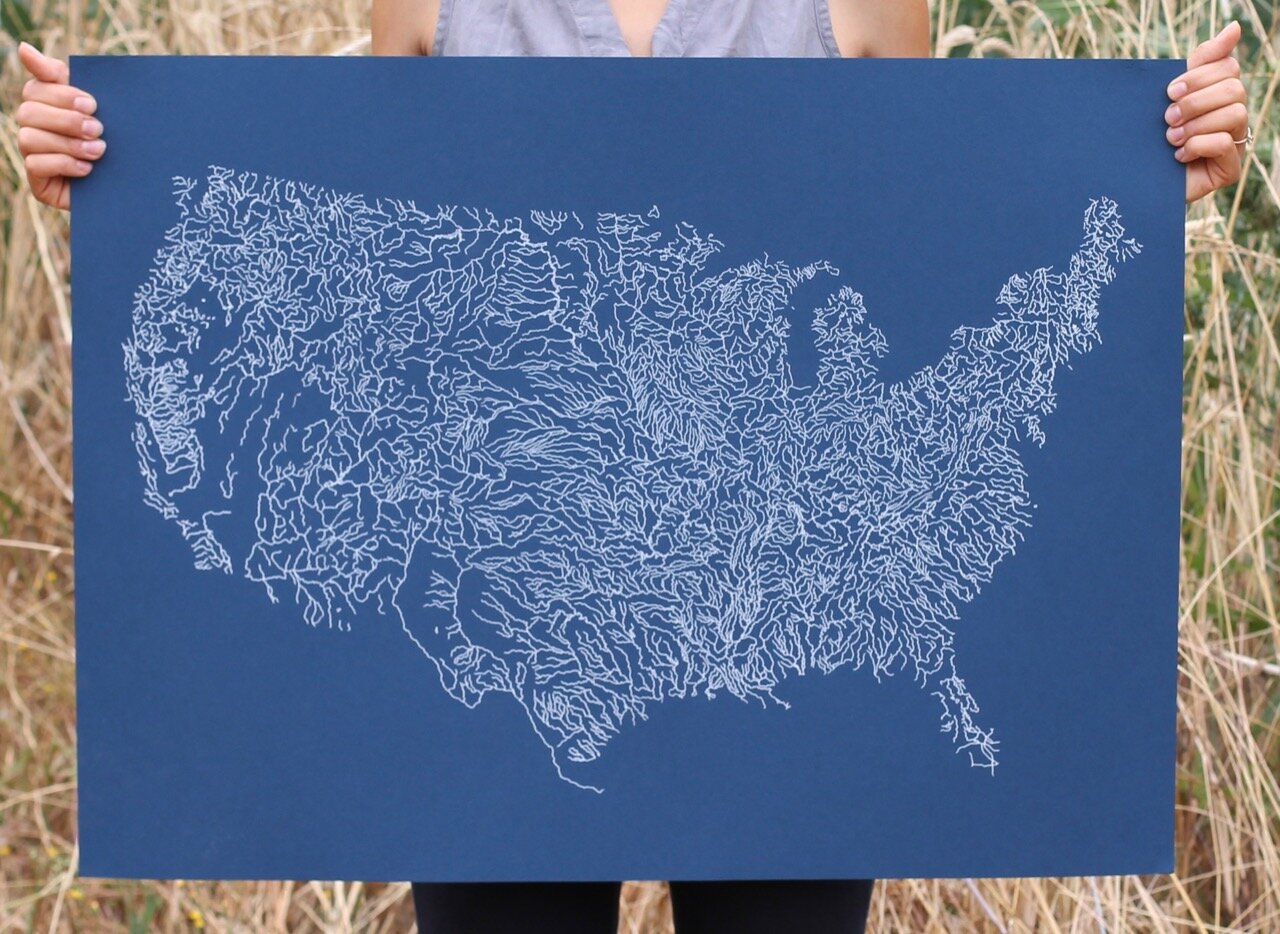Trace the source and path of the waterways in your neighbourhood or locality, as an act of permaculture
“All Things Merge Into One” – Rivers of the US map, by Nina Montenegro
We have great respect for the deep, gritty power of permaculture practices. They’re often at the base of much of the most interesting climate activism, like Transition Network and Extinction Rebellion. Permaculture is a vision of a rebalancing between humans and nature that emphasises hands-on and sociable activity - as well as a deep appreciation for the complex systems that undergird this action. It’s also good to be reminded of a belief in permanence and deep sustainability, when our headlines tell us that much is unravelling and disintegrating in our built and natural world.
So we like this injunction - from the Australian permaculture website Milkwood, but it can apply to anyone anywhere:
This little challenge is subtle but powerful – how much do you know about the water that flows by where you live? How much do you know about where it comes from, and where it flows to?
Once, our waterways were intrinsic to our communities’ health – on a practical, day-to-day basis. Water is life, after all.
To take on this simple Permaculture Living 2020 challenge, you’ll start by re-learning about your waterways. No matter how urban your local ‘hood is, we can deepen our sense of connection to place, and all that flows from that.
Learning your local waterways might involve maps, some internet research, or your feet, and a commitment of time – can you walk your local waterway (or it’s path, if it’s underground for some sections) for an afternoon, or a day?
Where does the water (or it’s path, if your local waterway is dry right now) go? Where does it come from?
And what does your local waterway’s current state of health reflect about your community, and your place?
This is an exercise in observation. interaction, and discovery – that will reveal all sorts of things about your place – in a not dissimilar way to learning about the wild plants where you live.
More here. The post is tagged under some other rich categories, like Urban Permaculture, Water Harvesting + Reuse, Watershed Restoration, and has a very useful list of practical resources at the end.
We also draw your attention also to the beautiful artwork at the top of our post, titled “All Things Merge Into One” – Rivers of the US map, by the artist Nina Montenegro - click on her name to purchase prints.
We’d be interested in reverse-engineering her process. How would you visually map the waterways in your area in this way - which shows the deep pattern-matching between different kinds of networks (neural, natural, etc)?

